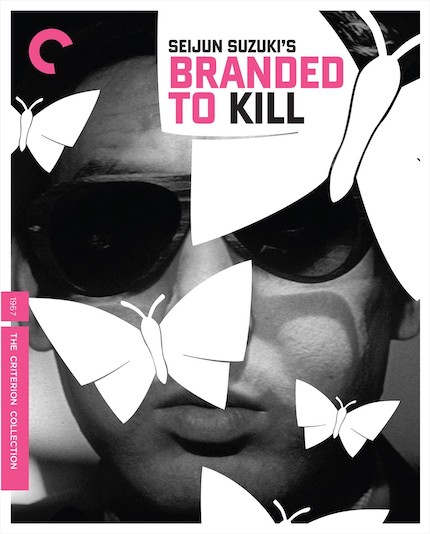BRANDED TO KILL 4K Review: Exciting and Funny
Suzuki Seijun's 1967 masterpiece, starring Shishido Joe, got him fired from Nikkatsu. Now available from The Criterion Collection.

"I love the smell of boiling rice."
Branded to Kill
The film is now available, separately, on 4K UHD+Blu-ray Combo (two discs), Blu-ray (one disc), and DVD (one disc), from The Criterion Collection. It is also streaming as part of the "Directed by Seijun Suzuki" collection on The Criterion Channel, with an introduction by Grady Hendrix (see trailer below).
The first time I saw Branded to Kill, I didn't understand it.
Unlike the head of Nikkatsu, however, I did not fire filmmaker Suzuki Seijun, who was accused of 'making movies that make no sense and make no money,' as he recalls in an interview from 2011, included as part of The Criterion Collection's edition of the film.
Suzuki's Tokyo Drifter (1966) was much easier for me to understand and enjoy, and has remained my favorite Suzuki in the years since I saw it, followed by Underworld Beauty (1958) and Tattooed Flesh (1965), both of which I saw at the American Cinematheque in Los Angeles in the early 2000s. Suzuki described those films as "program pictures," meant to entertain with no greater meaning intended beyond making them "exciting and funny."
That was his intention with Branded to Kill, which was dreamed up by a 'writer's room' of seven screenwriters (plus Suzuki) one night over dinner. He shot the film with his usual efficiency, making them quick and easy to edit, and total concentration. Nikkatsu was churning out 104 movies per year in that era -- a new double-feature every week of the year -- so what made Branded to Kill stand out?
The Nikkatsu studio head watched it, didn't understand it, and fired Suzuki, despite his contract. Suzuki, who viewed filmmaking more as a way to make money than as an artistic calling, sued the studio for damages. He won the lawsuit, eventually (not until 1971, as critic Tony Rayns points out), but as a consequence of his filing the lawsuit, no other studio in Japan would hire him, leaving him to turn to television in order to make a living directing commercials, and also acting.
The information above all comes from three supplementary features that were previously included on Criterion's past Blu-ray and DVD editions, namely, interviews with Suzuki Seijun and assistant director Kuzuu Masami from 2011 (12 min.); a great, great interview with Shishido Joe, also from 2011 (11 min.); and an interview with Suzuki from 1997 (14 min.). They are all excellent and provide valuable insight into Suzuki's working methods. A trailer from the original theatrical release is also included (3 min.).
Originally published in 2011, the essay by Tony Rayns, printed and included, is quite good, which is expected. Rayns is a top-notch critic and historian, and his fluid, expert writing reflects that, as he provides background on Suzuki's life before the film, and also breaks down the film far better than I could.
What's New?
The new 4K digital restoration looks immaculate. The blacks are very, very dark, the image is crystal clear, and the whites really stand out. It's easy to appreciate the shadows and fog of the black-and-white picture, and I must say that naked bodies look very, very good in 4K -- which is a story by itself, which is covered in the supplementary features.
The 4K + UHD/Blu-ray two-disc edition features the 4K on its own disc. The other disc includes all the supplementary features on a Blu-ray, as well as a Blu-ray version of the transfer, for the benefit of those who do not yet own a 4K setup.
As is usual, my 4K player and 4K television upscaled the Blu-ray to improve the viewing experience. It looks good, like a Blu-ray should, but I only sampled the first 15 minutes because I had already watched it in 4K, which looks very, very good.
Watching the film again, I think I finally "got" more of it. Appreciating that it is not meant to be a traditional narrative, but rather a rebellion against traditional tropes and a playful exercise, also helps.
Suzuki was having fun. He did not intend it to be the "peak" of his career; he still had more movies he wanted to make. Branded to Kill stands as a testament to his talent and his skills as a filmmaker. It's an abstract, jazzy film that stands up to repeat viewings and gets better as it goes. Press "play," sit back, and enjoy the madness.
Branded to Kill
Director(s)
- Seijun Suzuki
Writer(s)
- Yasuaki Hangai
- Yutaka Okada
- Seijun Suzuki
Cast
- Jô Shishido
- Mariko Ogawa
- Annu Mari






